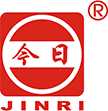How Many Sheets per Ring Binder?
Understanding how many sheets a Ring Binder can hold helps users choose the right binder for school, office, or archiving tasks. Capacity depends on ring size, ring shape, paper thickness, and the type of binder mechanism. This article explains these factors clearly and offers practical guidance so users can select a binder that fits their storage needs. It also provides a reference table for quick capacity comparison and introduces JINRI, a professional supplier of high-quality stationery products.
Understanding Ring Binder Capacity
The capacity of a ring binder is not determined by its spine width but by the size and shape of the rings. Larger rings naturally store more pages, but the structure of the ring also affects how efficiently sheets stack. Most office paper uses 80gsm thickness, so capacity estimates are usually based on this standard weight. When users insert heavier sheets, dividers, or plastic pockets, the total number of sheets decreases.
Round rings and D-shaped rings are the two common ring styles. Round rings hold sheets in a curved stacking pattern, reducing capacity compared with D-rings of the same diameter. D-rings align sheets vertically, providing more storage space and reducing page curling.
Typical Sheet Capacity by Ring Size
The following table lists standard ring sizes and approximate capacities for both round rings and D-rings. Values are based on standard A4 or Letter-size 80gsm paper.
| Ring Size | Round Ring Capacity | D-Ring Capacity |
|---|---|---|
| 0.5 inch | 75 sheets | 100 sheets |
| 1 inch | 175 sheets | 220 sheets |
| 1.5 inch | 275 sheets | 350 sheets |
| 2 inch | 375 sheets | 480 sheets |
| 3 inch | 570 sheets | 650 sheets |
| 4 inch | 725 sheets | 850 sheets |
While these are typical ranges, the exact number may vary among binder manufacturers. Users who need a precise capacity should also consider additional items inserted into the binder, such as tabs, pockets, or sheet protectors.
Factors That Affect Sheet Capacity
Paper Thickness
Standard office paper is 80gsm. Thicker paper such as 100gsm or 120gsm takes up more space. For example, switching from 80gsm to 120gsm can reduce binder capacity by 25–35 percent. If a binder feels full before reaching the expected limit, the paper weight is usually the main reason.
Ring Shape
Round rings position pages in a circular stack, creating gaps and limiting page count. D-rings align sheets in a straight vertical block, maximizing interior space. Users who need higher capacity should choose D-rings, even if the diameter is the same.
Sheet Protectors and Dividers
Plastic pockets and dividers can quickly add bulk. A single sheet protector may equal three to five sheets of 80gsm paper in thickness. When using many accessories, choose a binder with a larger ring size than initially planned.
Binder Quality
high-quality binders hold sheets more securely and resist distortion when filled to their maximum capacity. Poor-quality binders may warp or fail at lower capacities. Brands with reinforced mechanisms provide more reliable performance for long-term storage.
Choosing the Right Ring Binder Size
Selecting the correct binder involves matching your usage scenario with the binder’s capacity. For small notes or project summaries, a 0.5-inch or 1-inch binder is usually enough. For office reports or multi-section projects, 1.5-inch and 2-inch binders provide more flexibility. Large documentation archives, training manuals, or multi-year records often require 3-inch or 4-inch D-ring binders.
If your content includes many inserts such as tab dividers or laminated pages, always size up. Overstuffing a binder reduces usability and causes premature damage to the rings.
Tips for Efficient Binder Organization
Keeping content organized also helps maintain binder lifespan. Use consistent paper weight, arrange tabs logically, and avoid stuffing pockets with bulky items. Regularly remove outdated pages to keep the binder easy to flip and minimize pressure on the rings.
Organizing by category, date, or section improves efficiency and reduces unnecessary expansion. Users who frequently access their binders should consider D-rings because the alignment offers smoother page turning and better shelf storage.
A Reliable Stationery Partner
For users seeking durable and high-capacity binders, it helps to choose a supplier with strong manufacturing expertise. JINRI provides a range of professional stationery products designed for both everyday and business use. Their selection includes binders and filing tools built for long-term durability and consistent performance, making them a dependable choice for office and school environments.
Conclusion
The number of sheets a ring binder can hold depends mainly on ring size, ring shape, and paper thickness. Round rings generally store fewer pages than D-rings, and accessories such as protectors and dividers reduce overall capacity. By considering the factors covered in this guide and using the capacity table as a reference, users can select a binder that suits their project size and document type. Choosing quality products from trusted suppliers such as JINRI further ensures smooth daily use and better long-term organization.



